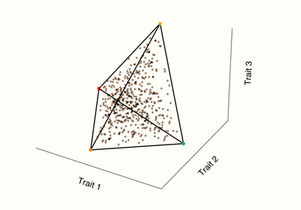
ComDePri
We believe that computational design principles can bridge between the mind and the brain.
Our approach is the brainchild of Marr's Levels of Analysis and Systems Biology.
Drawing on Marr's levels of analysis, we focus on first identifying the computational goals of cognitive processes, then infer its algorithmic level, and lastly, find the specific neuronal implementation of the algorithm in the brain. Borrowing on Systems Biology concepts (and Neother's theorem) we connect between the computational and algorithmic levels by formulating principles of information sensing and processing such as: robustness, scale invariance, the dynamic range of the encoding function, balancing of trade-offs, compression of information, and prediction, to name a few. These computational goals impose significant constraints on the allowed designs of the possible "circuit topologies" (dynamical equations) and thus point to specific computational mechanisms. Once the specific mechanism is known and modeled, we can infer its step-by-step computations to map concrete dynamics to neural functions and organizations.
Research Highlights
We employ a diverse range of tools from statistical physics, dynamical systems and control theory, information theory, Pareto analysis, bifurcation theory, functional data analysis, and big-data analytics applied to high-resolution, mass-scale measurements in different modalities to uncover fundamental computational principles underlying complex cognitive phenomena such as: creativity, togetherness, learning, memory, and geometrical and physical intuitions.













